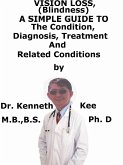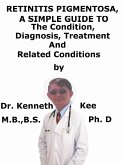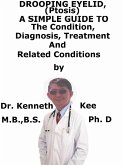After 30 years of family doctor practice, I had not seen a single case of retinal detachment or had examined a case in the hospital.
Now my own patient (a highly ranked civil servant in the Government service) had complaints of discomfort in his left eye.
He had all the classical symptoms of retinal detachment with high myopia, the appearance of floaters and the sudden falling of a cloud across his left visual field.
These signs were typical of retinal detachment.
I urged his family to immediately send him to the Singapore National Eye Center for immediate treatment by an eye specialist otherwise he may lose his sight.
He was rather calm in spite of my urging.
He told his family to go home, get all his identification cards and then proceed to the hospital for treatment.
It was typical of the senior civil servant that everything must be ready before he proceeded to the hospital.
I heard from his family that he was hospitalized immediately on arrival at the hospital.
He was prepared for surgical treatment.
Later he was to tell me that the procedure involve putting a gas bubble into his eye and that he had to be kept at a certain position to help the gas bubble push the detachment back to the retina.
It was painful but he had local anesthesia done before the procedure.
When the anesthesia wears off there was excruciating pain from the pressure in his eye but with analgesic he was able to bear with pain.
The final result was not 100% but at least he did not lose his sight.
Retinal detachment is a condition in which there is a separation of the neurosensory retina from the underlying retinal pigment epithelium.
It is a medical emergency as it may lead to loss of vision.
The following are at risk from Retinal detachment:
1. Age above 55 yrs
2. Very short sighted (myopia usually above 5-6 diopters).
3. History of serious eye injury (injury to orbits)
4. History of eye cataract surgery
Symptoms are:
1. Transient flashes of light
2. A sudden increase of floaters in one eye
3. A ring of floaters at the temporal region of the central vision
4. A feeling of heaviness in the eye
5. Presence of cloud in front of the eye so that parts of an object are not seen
Indirect opthalmoscopy may show the grey folds of the detachment.
Treatment is aimed at finding the holes or tears and closing them.
1. Vitrectomy involves the removal of the vitreous gel followed by filling the eye with a gas bubble (SF6 or C3F8 gas).
2. Cryotherapy and Laser Photocoagulation are used to create a adhesion around the retinal hole so that fluid cannot enter the hole
3. Adatomed Silicone Oil is injected into the eye and mechanically holds the retina in place
4. Pneumatic retinopexy is done under local anesthesia by injecting a gas bubble (SF6 or C3F8 gas) into the eye after which laser or freezing treatment is applied to the retinal hole
When the Retinal detachment is diagnosed and treated early, the outlook of treatment of is good although visual acuity may not be as good as before.
Dieser Download kann aus rechtlichen Gründen nur mit Rechnungsadresse in A, B, CY, CZ, D, DK, EW, E, FIN, F, GR, H, IRL, I, LT, L, LR, M, NL, PL, P, R, S, SLO, SK ausgeliefert werden.









